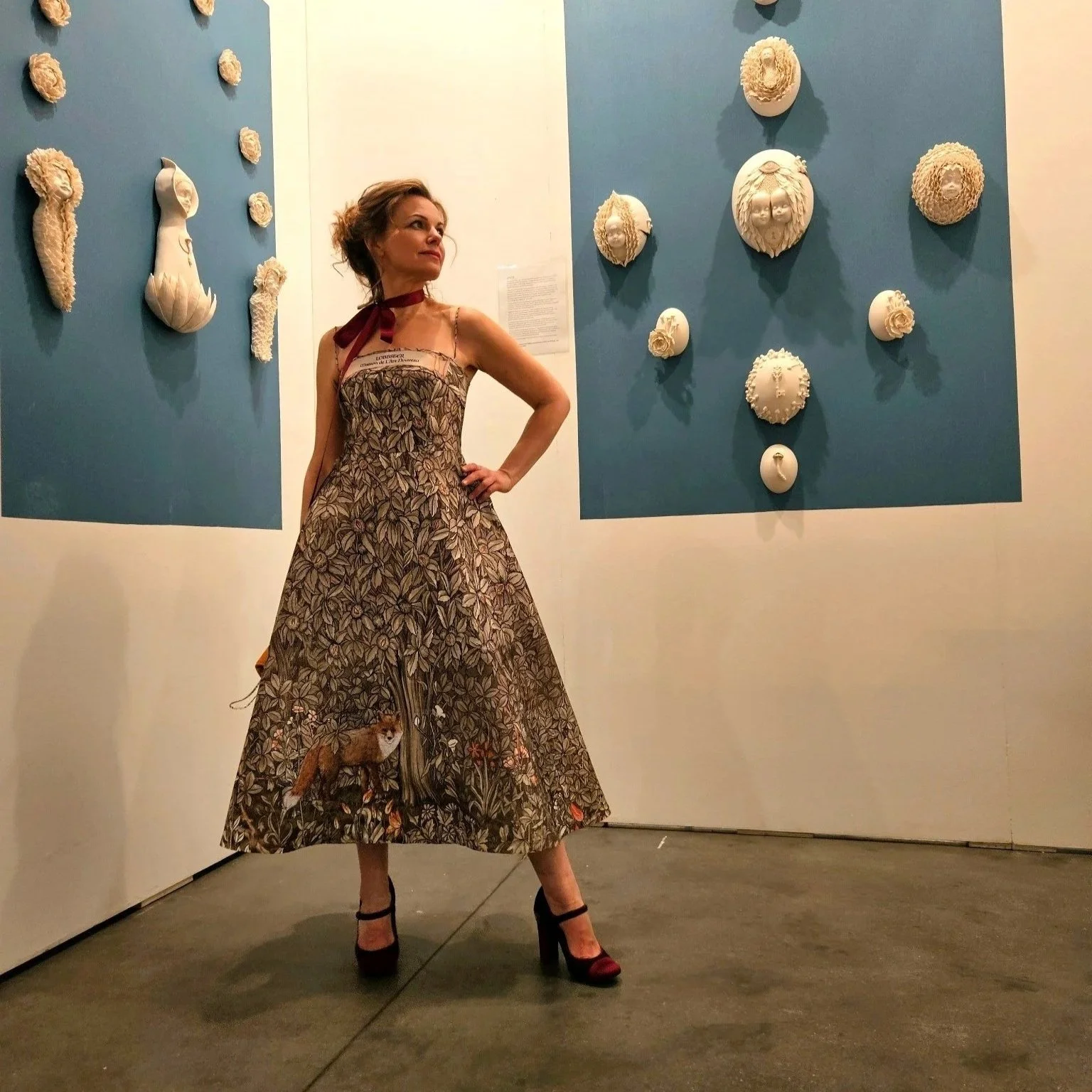Modern Artist Profile - Tanya Besedina
/In conversation with Tanya Besedina, one of the many talented artists participating in the 2025 Mississauga Festival of Trees.
1. Tell us a bit about your art practice. What do you specifically do?
My art grows from silence — from the places where words end and feeling begins. I work with porcelain because it feels alive to me: fragile yet enduring, translucent like the inner light we all carry. My process is slow and intuitive. Each sculpture starts with an emotion I can’t explain and takes shape through touch, reflection, and time.
I think of my work as a form of soul-mapping — tracing invisible stories of love, loss, and transformation. Porcelain lets me express both fragility and strength, just as they coexist in life. What matters to me is not perfection, but honesty — creating something that feels true.
2. What inspires you?
Inspiration finds me in quiet, intimate moments — in memories, dreams, and conversations that linger. Much of it comes from my own journey: motherhood, especially raising a blind daughter who taught me to sense the world through touch, sound, and intuition. That experience changed how I understand beauty — it’s not always seen, but always felt.
My Ukrainian roots give me a deep connection to resilience, heritage, and the power of memory. Living in Canada, I also find endless inspiration in nature — in snowlight, in still water, in the hush of forests.
I’ve also been shaped by my experiences with sacred plant medicines such as mushrooms and Ayahuasca. They opened my heart and helped me see how deeply everything is connected. Through them, I learned that art can be a form of healing — a quiet way to honour life’s mystery and the light we all share.
3. How do you approach a new project?
Most of my projects come to me through meditation. I often see them as complete, ready objects before they exist — almost like visions asking to be made real. That’s exactly how Roots of Light began.
Once the vision appears, the challenge is always technical: how to build it, how to make the impossible possible. I’m fortunate to have a very supportive husband and family who are always involved in my creative process. Together, we experiment, problem-solve, and bring these ideas to life. It’s a shared journey that combines intuition, craftsmanship, and love.
The idea behind Roots of Light is simple but powerful. Trees do not exist alone — underground, they are linked by roots and fungal networks that allow them to share nutrients, warn each other of danger, and keep the forest alive. By making these invisible systems visible through glowing threads of light, the installation reminds us that survival depends on connection.
This connection is both ecological and human. Just as trees need one another, people also thrive when we live in supportive communities — when we share, nurture, and protect each other. The cocoon, glowing with porcelain leaves, represents both fragility and resilience. The luminous roots flowing from it remind us of the unseen networks, natural and social, that sustain life.
At its heart, Roots of Light is about interdependence — between trees, between people, and between humanity and the natural world. It invites visitors to step into a space where they can see and feel those connections, and to reflect on how we can care for them in an age of environmental fragility.
4. Describe the experience of working with CreativeHub 1352 in Mississauga on a commissioned artwork for the Festival of Trees.
Working with CreativeHub 1352 has been an inspiring and supportive experience. The team is deeply involved, patient, and genuinely interested in each artist’s creative process. I appreciate how they listen, share thoughtful feedback, and encourage experimentation. It feels like a true collaboration built on trust and respect. I’m grateful for their openness and for the sense of community they’ve created.
5. What excites you about Mississauga’s Festival of Trees?
This project has pushed me beyond what I thought was possible — both for myself and for the material I work with. Porcelain is delicate, but through this challenge, I discovered new ways to make it bold and expansive. That kind of creative risk is what excites me most.
I’m also inspired by the spirit of the Festival itself. It brings together so many artists, each with their own vision and voice. To see all these ideas growing together like a forest of creativity — that’s something special.
6. What’s in store for 2026?
In 2026, I plan to continue expanding my work with large-scale installations that merge porcelain with light and natural elements. I also want to begin a new research project in museum collections, exploring the history of porcelain across cultures and centuries. From that research, I’ll develop an experimental porcelain collection — pushing the material into new conceptual and emotional territories.
I’m also interested in collaborating across disciplines — with musicians, designers, and environmental artists — to create immersive, reflective spaces. Mostly, I want to keep growing my work in a way that feels honest and alive. Every project teaches me something new about connection, beauty, and the strength found in vulnerability.














